Snakes are creatures that often evoke fear and fascination in people. Among the thousands of species in the world, some are particularly notorious for their deadly venom. This makes them a subject of interest and caution. In this list, we reveal the 25 most dangerous snakes known to the world.
Ranging from Africa’s swift Black Mamba to Australia’s stealthy Eastern Brown Snake, we’ll uncover the snakes that pose the greatest threat to humans. Each snake in our list has a unique aspect that earns it a spot among the lethal elite.
King Cobra
The King Cobra stands out as a formidable creature, not only because of its impressive size but also due to its potent venom. As the world’s largest venomous snake, it can reach lengths of 16 to 18 feet and has the ability to inject a large volume of neurotoxic venom with a single bite. This venom is so powerful. A single bite carries enough toxicity that can be fatal to 20 people.
Found predominantly in Southeast Asia, with its origins traced back to India, the King Cobra has a unique diet that includes other snakes. It is a sizable creature, tipping the scales at 20 to 28 pounds. The very thought of encountering a King Cobra can be alarming, yet it’s essential to remember that these snakes would much rather evade human interaction if given the option.

Eastern Brown Snake
The Eastern Brown Snake is not one to mess with. Crawling through Australia, this slithery creature ranks as the second most venomous snake on the planet. Imagine this, just one bite contains enough venom to send 20 grown-ups to meet their maker. Slim but mighty, this snake may look slender and harmless, growing up to about 7 feet. Yikes!
Don’t be fooled by its name, though. This sneaky snake can change its wardrobe, appearing in various shades from brown to almost black. But don’t worry, it’s not out hunting humans. It just loves to munch on mice and rats. Still, it’s best to admire this fierce serpent from a safe distance!
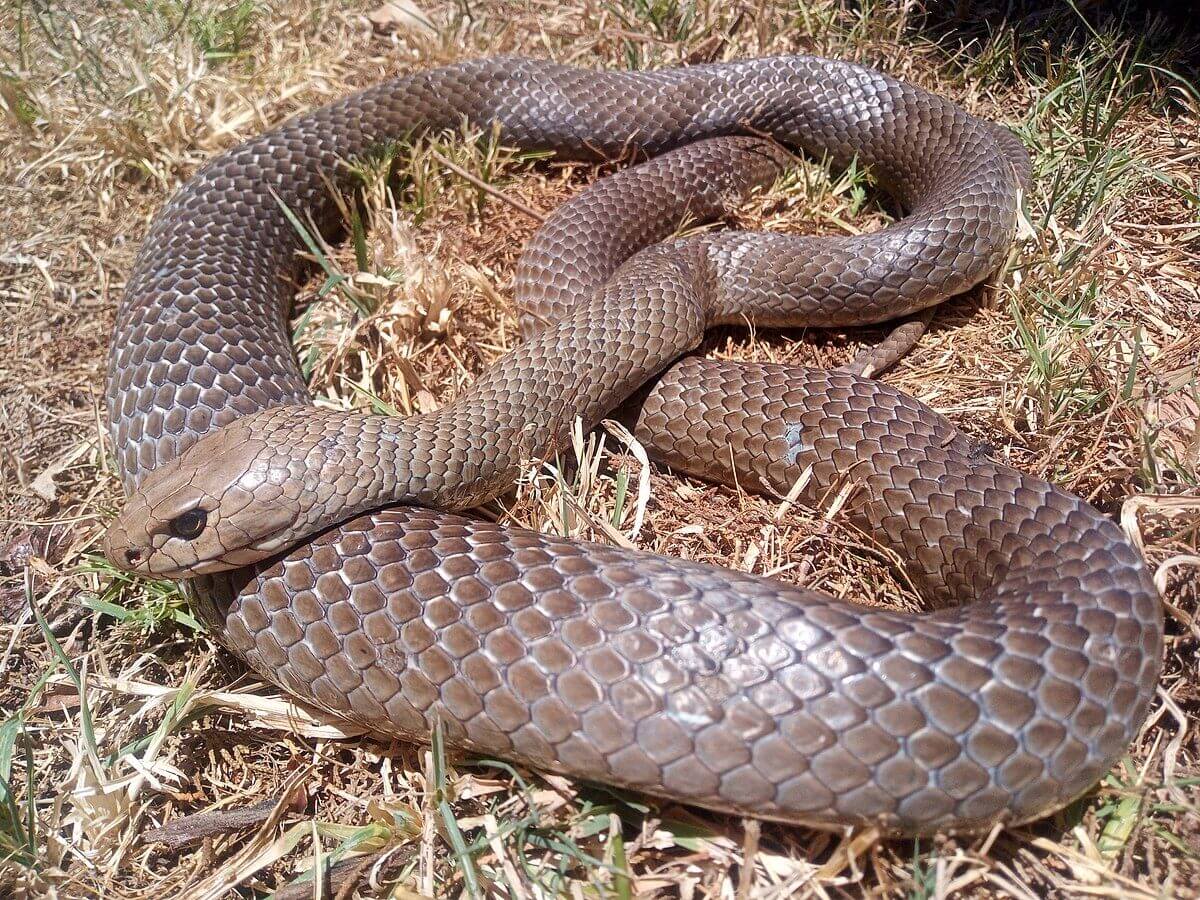
Rattlesnake
Among the deadliest snakes in the world is the rattlesnake. It’s known for the distinctive rattle sound it makes with its tail. This sound serves as a warning to anyone who gets too close. Native to the Americas, rattlesnakes come in many types. But all of them pack a venomous bite that can be fatal if not treated quickly.
What makes rattlesnakes especially dangerous is their presence in populated areas. Their venom can cause severe pain, paralysis, and even death. Despite their danger, they usually bite only when threatened or surprised. So, it’s necessary to stay aware and avoid these dangerous reptiles.

Black Mamba
The black mamba is feared as one of the deadliest snakes on the planet. Found in Africa, its name comes from the dark color inside its mouth. This snake is incredibly fast. It moves at speeds of up to 12 mph, making it the fastest snake in the world.
Black mambas are known for their aggression and highly potent venom. They can kill a human in less than 20 minutes if the bite is not treated. They usually strike when threatened, delivering multiple bites in a single attack. Avoiding these lethal creatures is the best way to stay safe.
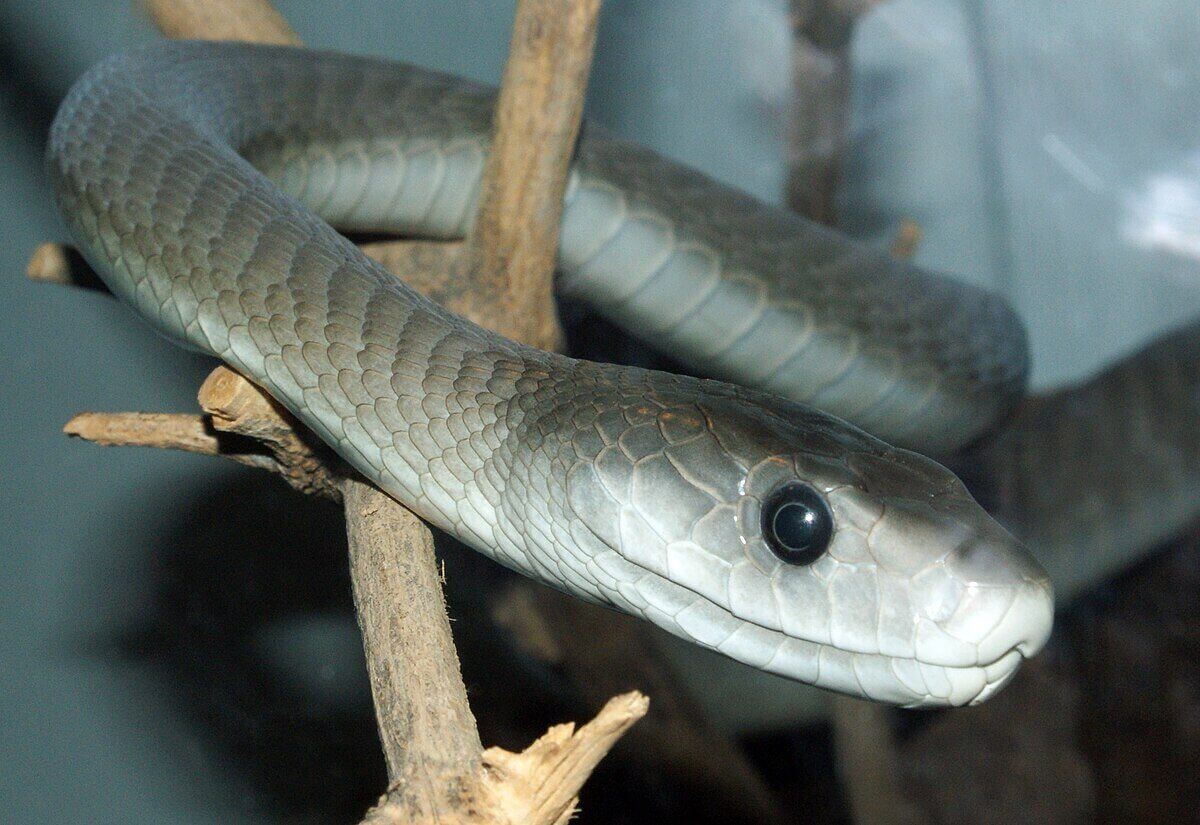
Egyptian Cobra
Beware of the sandy landscapes of North Africa, for they are the domains of the notorious Egyptian Cobra. This slithery menace is known for its assertive hood and intimidating hiss. It packs a venomous bite that deserves great respect! These cobras don’t mess around. Their toxin can swiftly mess up your nerves and leave you in a world of trouble.
Adventurers and local dwellers alike tell tales of this cobra’s legendary mood swings. One minute it’s sunbathing serenely. The next, it’s all fangs and fury if you tread too close. If you’re ever near its home turf, remember: respect is the name of the game. Best to watch its elegance from afar unless you fancy a high-stakes game of chicken with one of the world’s deadliest snakes!
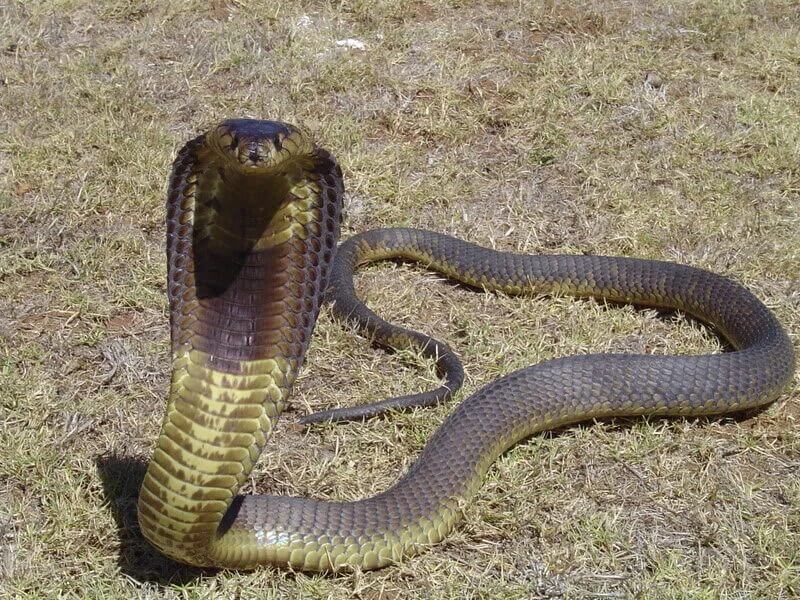
Ocellated Carpet Viper
Don’t let the fancy name fool you. The Ocellated Carpet Viper is as deadly as they come! Small yet fearsome, this viper packs a venomous energy that can cause serious harm. Found slinking around the forests of West Africa, it’s not one to make a grand entrance but beware of its camouflage skills. They blend perfectly with the leafy grounds.
Beware, though! The Ocellated Carpet Viper is quick to strike when threatened. Its venom can cause severe swelling and pain. Even so, the Ocellated Carpet Viper helps by eating lots of pests like rodents. It goes to show, even the most fearsome snakes play an important part in nature.
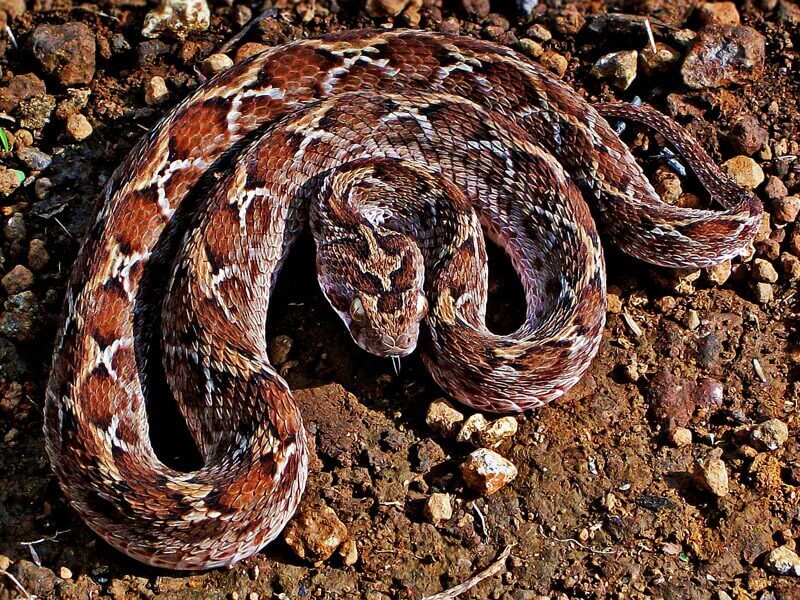
Indian Cobra
Watch out for the Indian Cobra, a slithery danger often found in India and nearby countries. This hooded menace is famous for its appearance in snake charmer performances. But don’t be fooled by its showbiz reputation. One bite from this reptile can deliver a deadly cocktail of neurotoxins, instantly putting you in grave danger.
Despite its fearsome status, the Indian Cobra plays a starring role in local folklore and is even considered sacred by some. If you’re trekking through its home turf, keep your eyes peeled for its distinctive hood and treat it with the respect it demands, from a safe distance of course!

Russell’s Viper
Watch out for Russell’s viper, a seriously venomous snake found mostly in Asia. It’s named after a snake expert named Patrick Russell, making it quite famous for its dangerous bites. This snake means business with its powerful venom, and if it bites, you’d better hurry to a doctor.
But here’s the kicker: despite its dangerous rep, the Russell’s Viper is kind of a rock star in the snake world. It’s got this unique pattern that looks absolutely cool, almost like it’s wearing a trendy jacket. But don’t let its good looks fool you. This snake is responsible for more snakebite incidents in its region than any of its slithery friends.

Indian Saw-Scaled Viper
Meet the little daredevil of the snake world, the Indian Saw-Scaled Viper! As the tiniest member of India’s “big four” – the snakes causing the most trouble – it packs a punch far above its weight. Found from the Middle East to Central Asia, especially in the Indian subcontinent, this small snake commands respect.
Despite its size, the Indian Saw-Scaled Viper is a master of disguise with a venomous bite that’s out of this world. It thrives in populated areas, making it extra dangerous. With its ability to blend in and quick temper, this snake is definitely not one to mess with!
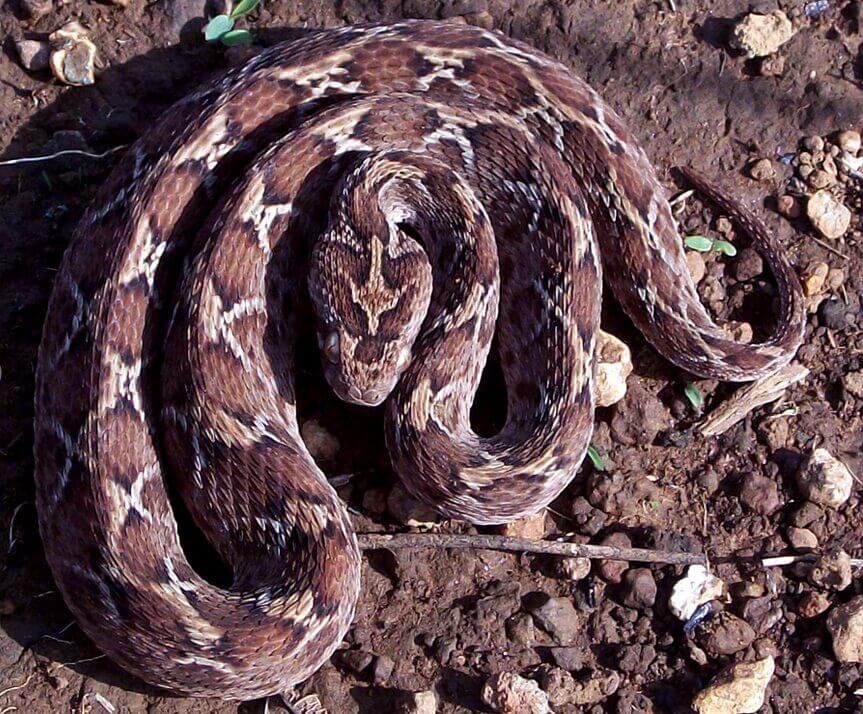
Tiger Snake
Beware of the Tiger Snake, a venom-toting native of the cooler regions of southern Australia and Tasmania. This snake is a pretty face with its distinctive stripes. But, it’s one of the most feared creatures down under due to its potent venom. Tiger Snakes have made themselves at home in a variety of habitats. They live from wetlands to forest edges, and they’re surprisingly good climbers too!
Despite their dangerous reputation, Tiger Snakes play it cool when confronted. They prefer to give a warning by flattening their bodies and lifting their heads in a classic defensive pose. If you’re in their territory, staying calm and giving them space is the way to go!
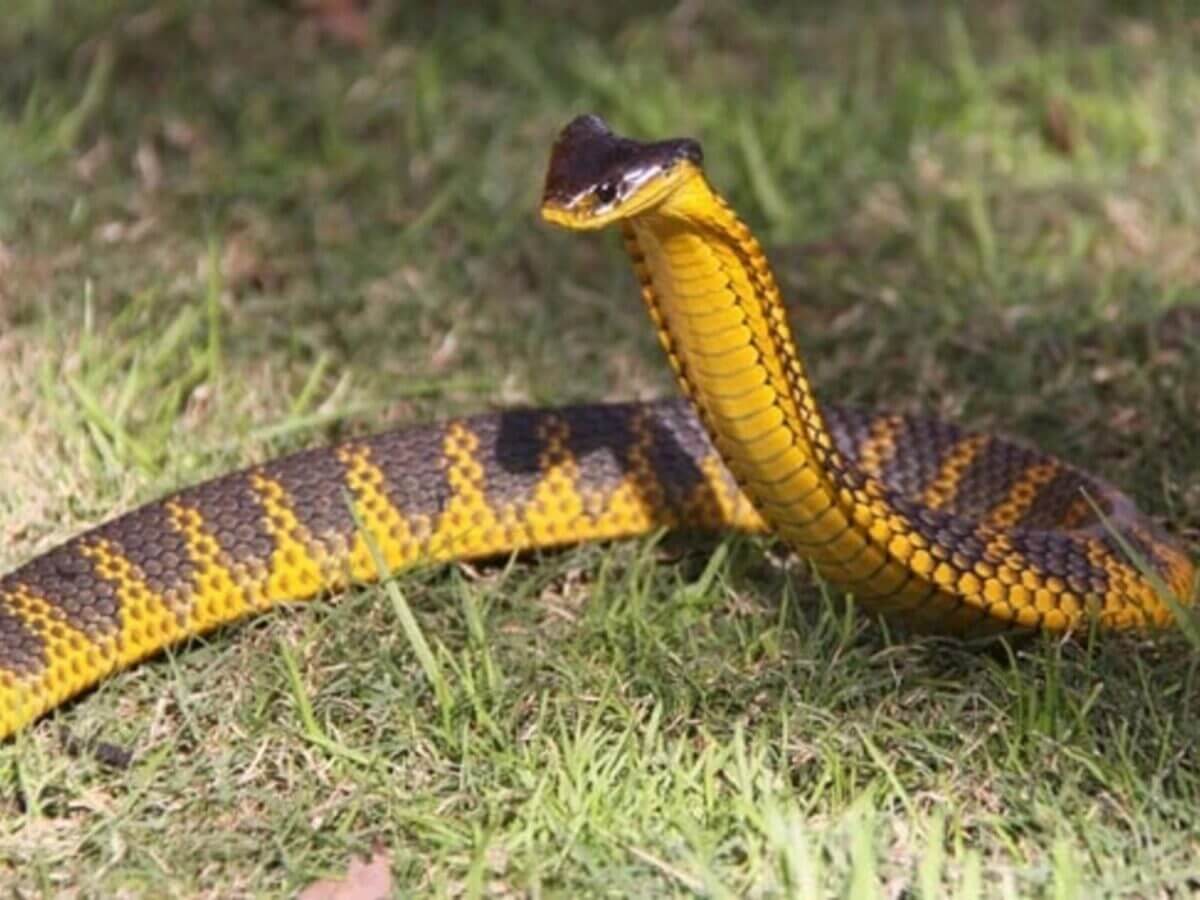
Faint-Banded Sea Snake
Meet the Faint-Banded Sea Snake, also known as Belcher’s Sea Snake. It’s not just any sea slitherer; it’s packed with venom! Despite its power, this snake is quite shy, rarely biting unless really messed with. Most often, it’s fishermen who get an unwelcome nip when handling nets. But lucky for them, this snake usually keeps its venom to itself.
Though some say it’s the most venomous snake out there, science tells another story. It’s not about the most venom, but the kind that counts. So, while it packs a punch, there are land snakes that might just out-venom it. With its unique yellow and green bands, this sea snake is not just about looks but also about keeping the ocean interesting and a bit mysterious.
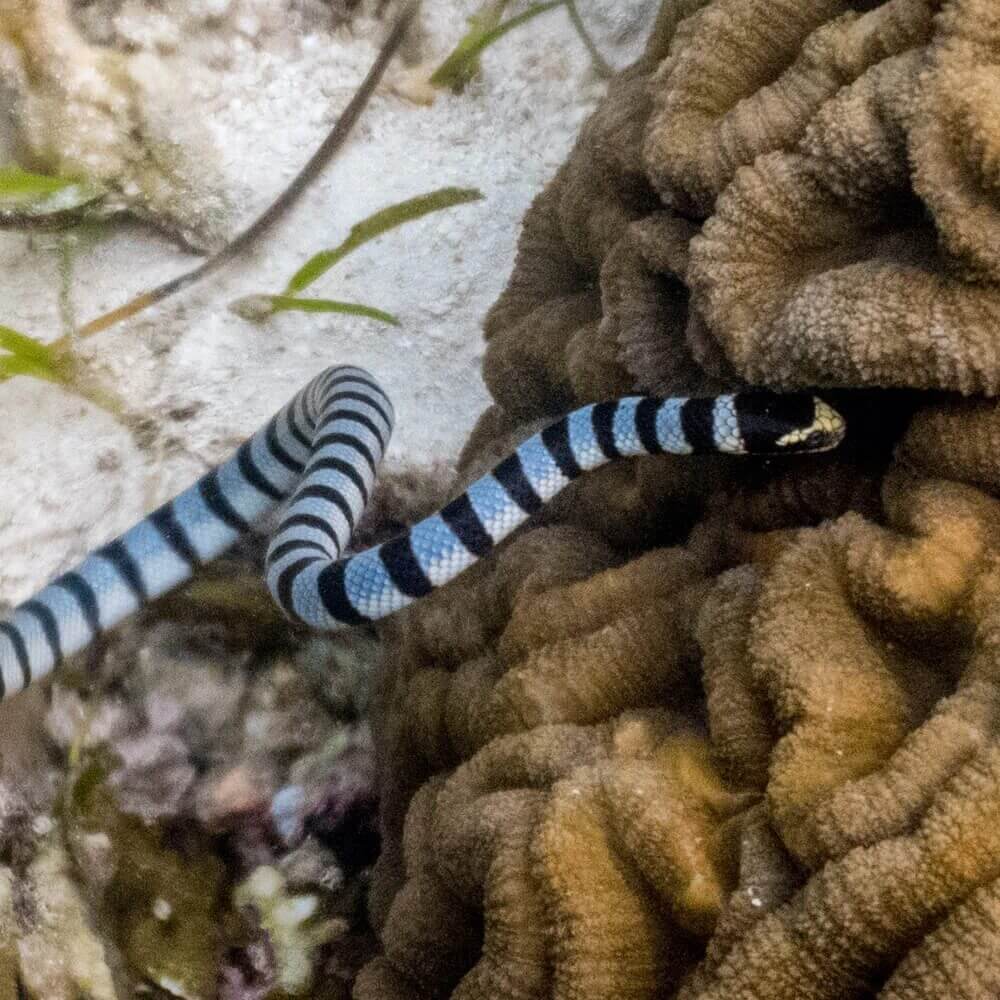
Blue Krait
Introducing the Blue Krait, a real standout in the venom department. This slinky creature, donning a wardrobe of dark-brown to bluish-black stripes separated by lighter bands, isn’t just about looks. With a body that stretches up to 108 cm and a bite loaded with potent venom, it’s a snake that demands respect. Found lounging around Southeast Asia, this snake prefers the nightlife, making it a hidden danger in the moonlight.
What makes the blue krait truly terrifying is its venom. A minuscule amount of this toxic cocktail can prove lethal, boasting a 60-70% mortality rate if untreated in humans. So, if you’re exploring Southeast Asia, keep an eye out for this sleek predator. It’s as deadly as it is beautiful.
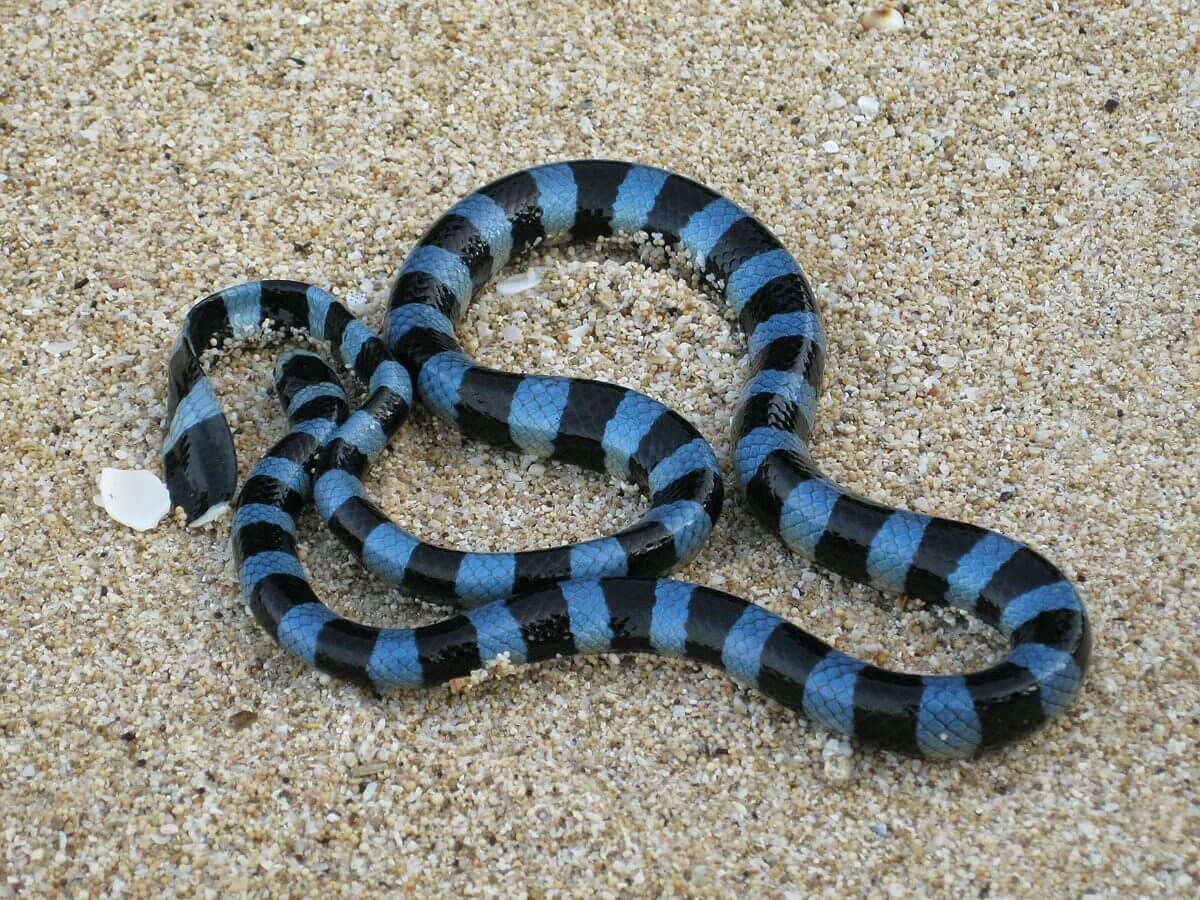
Philippine Cobra
The Philippine Cobra, known locally as “ulupong,” packs quite a punch with its venom. It’s one of the most feared snakes in the northern Philippines. This cobra has a unique method of defense: it spits venom with accuracy up to three meters away. It’s not just skilled in spitting; its medium length and stocky build help it blend into various habitats, from forests to farms.
What truly makes the Philippine Cobra formidable is its venom, a potent neurotoxin. This venom can cause respiratory paralysis and even death if untreated. A bite from this snake can rapidly lead to headache, vomiting, and difficulty breathing. So, if you’re exploring Luzon or Mindoro, keep a safe distance from this deadly spitter. It’s as mesmerizing as it is dangerous.

African Puff Adder
The African Puff Adder is not just any snake; it’s a champion hider! Found all over Africa, this sneaky serpent blends into the savannah and grasslands like a pro, making it hard to spot. It’s super venomous and has a bit of a temper, especially if you step too close. Watch your step because they’re known to hang out by footpaths!
Despite their grumpy side, these snakes are pretty fascinating. They can grow super long and prefer to ambush their prey rather than chase it. Remember, if you hear a loud hissing, you might just be near an African Puff Adder trying to say, “Back off!”

Terciopelo Viper
Meet the Terciopelo Viper, a heavyweight in the snake world! Living mainly in Central and South America, this viper can grow up to 2.5 meters long and weigh as much as six big textbooks. Its bark-brown skin makes it a master of disguise, perfect for surprise attacks.
Don’t let its slow nature fool you. The Terciopelo is super venomous. Often found near human areas, it’s behind many snakebites. But, it’s not looking for trouble and bites mostly when scared. So, watch where you step in its neighborhood!

Common Death Adder
Watch out for the sneaky Common Death Adder, lurking all over Australia and even Papua. It’s one of the top venomous land snakes out there. This clever hunter doesn’t bother chasing after its dinner. Instead, it hides under leaves, waiting to surprise frogs, lizards, and birds. With its killer camouflage and a tad of patience, it’s a real-life hide-and-seek champion.
The Common Death Adder is a fast striker, packing a punch with its venom. It’s not aggressive, but if you’re wandering in its home turf, be cautious. This snake prefers a surprise attack over a chase, making it quite the threat if stumbled upon. Always better to enjoy these creatures from a safe distance!

Eastern Green Mamba
Don’t judge the Eastern Green Mamba by its stunning bright green scales. This snake is as dangerous as it is beautiful! Native to the coastal regions of southern East Africa, it slinks silently in the treetops, averaging two meters in length. Contrary to popular myths, it’s not aggressive but will deliver a swift, venomous bite if threatened.
This shy snake enjoys a bird-based diet, cleverly camouflaged in green foliage. Beware, its venom packs a punch with neurotoxins leading to severe symptoms, and without prompt treatment, bites can be fatal. Definitely not a creature to mess with!

Jameson’s Green Mamba
Meet the Jameson’s Green Mamba, a sleek and venomous snake calling the equatorial forests of Africa its home. With a length of up to 2.2 meters, this slender snake sports a dazzling dull green color, perfect for hiding among leaves and trees. Its bite packs a punch with neurotoxins and cardiotoxins that can cause serious trouble, including paralysis or even death, in just a few hours!
This arboreal acrobat loves dining on birds and small mammals. While not naturally aggressive, if threatened, it won’t hesitate to defend itself. Caution is advised around this beautiful but dangerous snake, a true marvel of nature’s design.
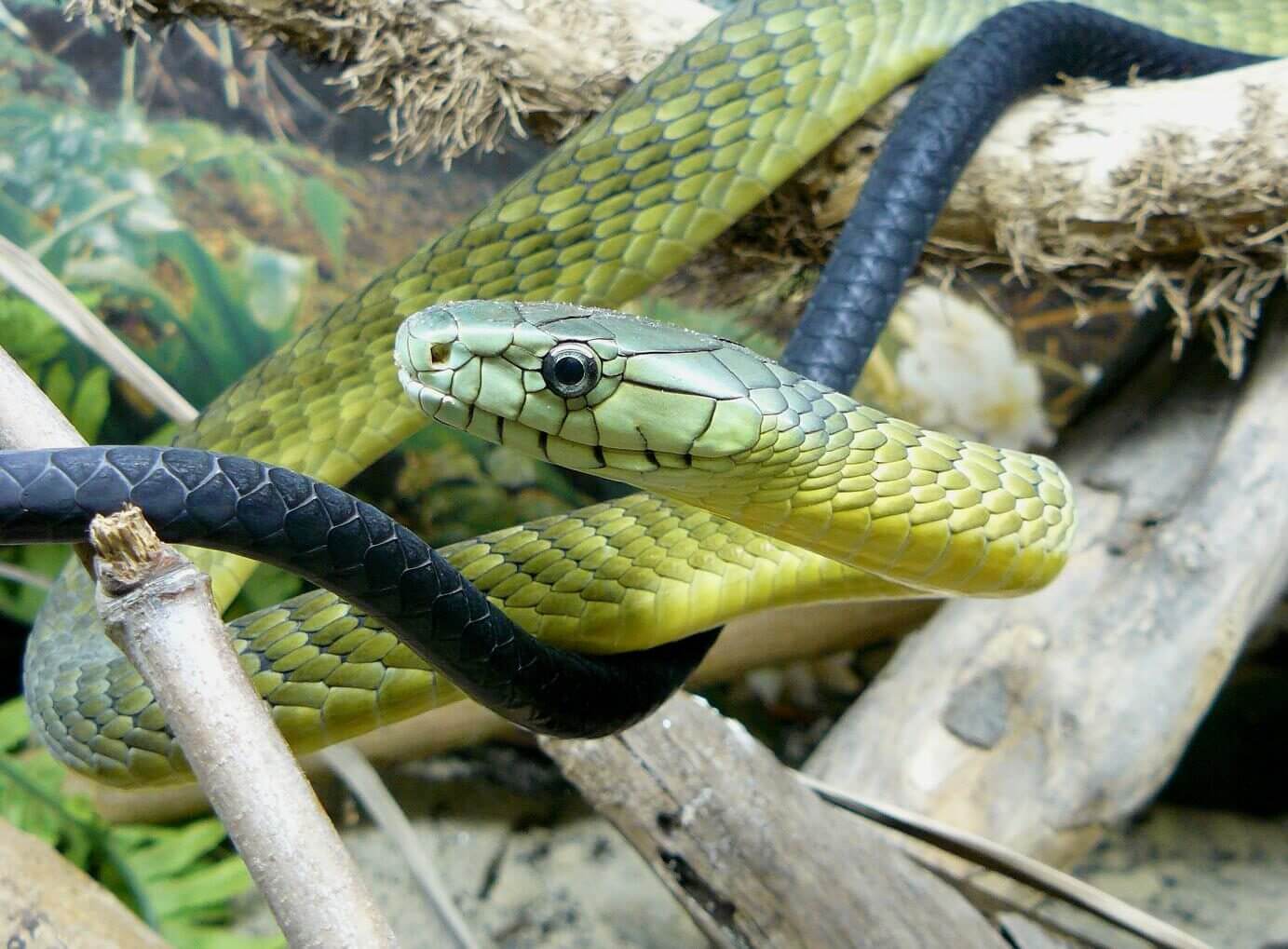
Copperhead
Watch your step in the forests of Eastern North America, for you might just miss the master of disguise—the Copperhead. Their sneaky, hourglass-shaped, dark brown markings blend perfectly with the leafy floor, making them nearly invisible! These snakes are not out to chase you. hey’d rather “freeze” than flee, so if you spot one, give it space to avoid a surprise nip!
Copperhead bites might give you a scare, but they’re rarely fatal. They’re more into ambushing critters like insects and small mammals for dinner. Just remember, though, half of the snake bites treated in the U.S. come from these copper-colored tricksters. Keep your eyes peeled!

Olive Brown Sea Snake
Slithering through the waters of the Indo-Pacific is the Olive Brown Sea Snake, or Aipysurus laevis. It is a venomous visitor of coral reefs, including the iconic Great Barrier Reef. They’re not just any sea snake with a paddle-like tail. They swim with ease and can reach up to two meters in length!
Though these brownish-purple reptiles feast on fish and crustaceans, they play nice with divers. And they rarely show aggression. Their super cool tail even has built-in light sensors to tuck away during hide and seek with predators. But don’t let the Olive Brown’s chill vibe fool you – its venom is no joke!
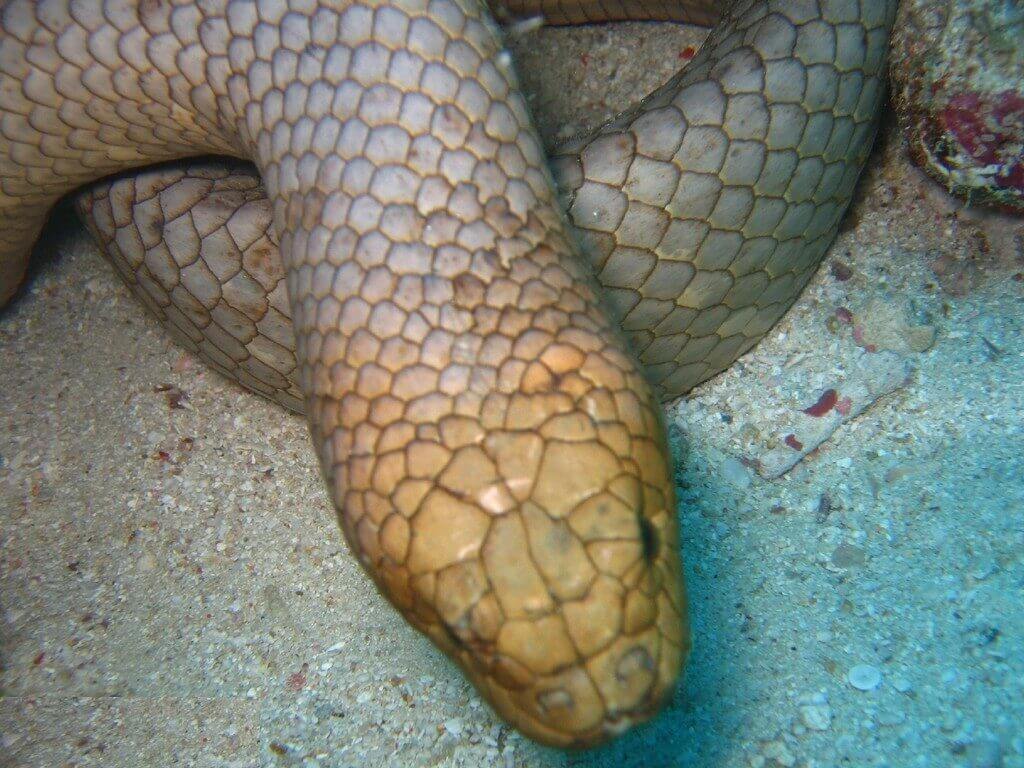
Common Yellow-Lipped Sea Krait
Watch your step and your swim! The Common Yellow-Lipped Sea Krait is not just another pretty face with its standout yellow snout and sleek black stripes. This slithery swimmer is found in the warm tropical waters of the Indo-Pacific. It is a real-life sea serpent that comes ashore for a break from the waves. But don’t let its chill beach vibes fool you. Its venom is a powerful neurotoxin, which means trouble for eels and small fish, and potentially for humans, if provoked.
While the sea krait’s paddle-shaped tail makes it a pro in the water, it’s a peaceful shoreline visitor that prefers to avoid human drama. Thankfully, unless you startle or threaten them, these snakes are more focused on their ocean buffet than biting beachgoers.

Boomslang
Watch out for the sneaky Boomslang, hiding in the trees of Sub-Saharan Africa! This slender snake hangs out in branches, showing off its large peepers and colorful scales—guys in flashy green and gals in subtle brown. They can stretch up to a nifty 6 feet, so look up when you’re wandering about!
Though seemingly mild-mannered, the Boomslang’s bite is no joke—its venom triggers severe bleeding. But fear not: it prefers peace over conflict, striking only when provoked. So, as long as you respect its space, encounters with this aerial snake remain safe and mesmerizing.

Papuan Taipan
Meet the Papuan Taipan, also known as Oxyuranus scutellatus canni, hiding out in the fields and woodlands of Papua New Guinea. it’s famed for being super venomous, ranking as one of the most venomous snake in the world. Imagine a creature so powerful, its bite is something you’d want to avoid at all costs!
Don’t let the Papuan Taipan’s sleek appearance fool you. This snake thrives in sugarcane fields and woodlands, making it a surprise guest in rural areas. Its venom packs a punch, designed to quickly immobilize its prey. So, if you’re ever trekking in its natural habitat, tread lightly and keep your eyes peeled for this dangerous beauty.

Jararaca
Meet the Jararaca, a snake with a bite you’d want to avoid! Living mostly in South America, this sneaky creature loves to hang out in Brazil, Paraguay, and northern Argentina. They’re not just any snake; they’re one of the main reasons people get snake bites in their home turf. But don’t worry, they’re not looking to pick a fight unless provoked.
This slithery friend isn’t just about danger. It’s also a contributor to science! Its venom was key in creating drugs to treat high blood pressure and some heart failures. How cool is that? From feared to lifesaver, the Jararaca is full of surprises!

African Forest Cobra
Watch out for the king of stealth, the African Forest Cobra! This slinky critter holds the crown for the largest cobra species in Africa and can reach over 10 feet—that’s longer than a sofa! Roaming from central to western Africa, these guys aren’t picky eaters. They munch on anything from bugs to mammals and other reptiles.
Don’t let the Forest Cobra’s slick, glossy scales fool you; this snake means business. If threatened, it puts on a scary show by puffing up its neck into a hood while hissing loud enough to send shivers down your spine. Bites are rare, but they’re no joke. A race to get antivenom is a must if one nabs you.

In Summary
The world hosts an array of slithering danger, with each venomous snake from our list boasting its unique form of potency. From the rapid strikes of the Black Mamba to the intimidating presence of the King Cobra, these serpents remind us of nature’s delicate balance between beauty and peril.
As fascinating as they are fearsome, these top 25 most dangerous snakes compel us with their survival mechanisms, which have been honed over millions of years. It’s a wild, wide world out there, and treading carefully is wise advice for those hoping to avoid a dance with our planet’s most lethal reptiles.















